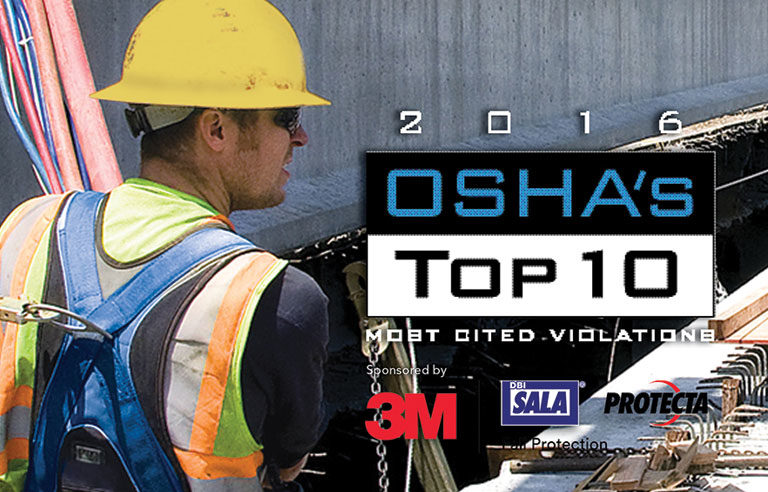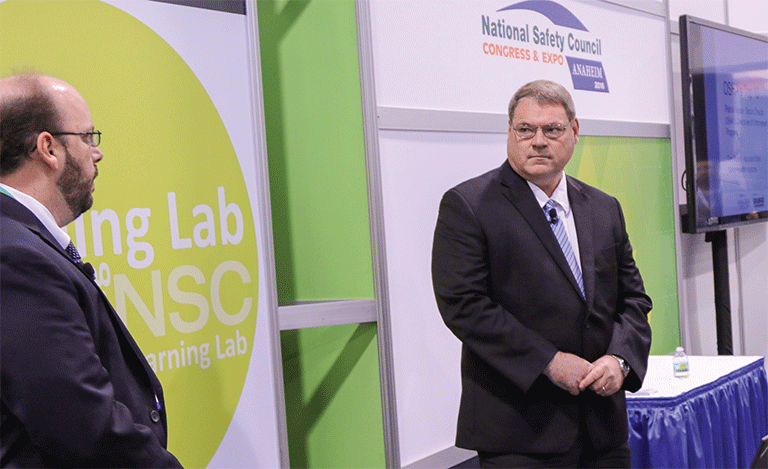OSHA’s Top 10 Most Cited Violations for 2016


Intro and Top 10 listing | Penalty Box
Q&A with OSHA's Patrick Kapust | Infographic | Citation Solutions
Q & A with OSHA's Patrick Kapust
Preliminary data for OSHA’s Top 10 was announced Oct. 18 at the National Safety Council Congress & Expo in Anaheim, CA. That day, Patrick Kapust, deputy director of OSHA’s Directorate of Enforcement Programs, sat down with Safety+Health Associate Editor Tom Musick to talk about the list – and how several recent initiatives have helped the agency track and target the most-frequently cited violations.

Safety+Health: Last year, OSHA announced it would implement a weighting system based on the complexity of inspections. What has OSHA learned from that strategy?
Patrick Kapust: What’s interesting about the enforcement weighting system is that previously, each inspection was counted the same regardless of the resources expended on it. We weren’t able to account for the wide array of inspections that we had, so we wanted a better system to recognize the resources that are put into inspections that address complex, serious hazards that take more time and resources to complete due to the nature of the hazards, the type of inspection and the nature of the worksites involved.
We came up with this enforcement weighting system. In the system, we have categories, and it does have some overlap with the Top 10. For example, combustible dust inspections are one of the categories within the enforcement weighting system. If you look at the Top 10 hazards that are uncovered during those types of inspections, they may be addressed by Hazard Communication (1910.1200), Respiratory Protection (1910.134) and many of the electrical standards. Obviously, you need to have appropriate listed and labeled electrical equipment installed in dust enclosures and where there are potential dust atmospheres that could explode upon electrical ignition. For non-permissible exposure levels, we have a category, as well as personal sampling where we test the atmosphere to see what kind of exposures employees may be experiencing. There, we may find hazards that are addressed by hazard communication again, and respiratory protection. So there is some overlap.
With our fatality investigations, a lot of those are due to falls. What’s number one? Fall Protection. Also this year, Powered Industrial Trucks (1910.178) is No. 6, and we see a lot of fatalities involving powered industrial trucks.
S+H: What about the severe injury tracking reports that OSHA started receiving in 2015? How do those overlap with the Top 10 most cited violations?
Kapust: One of the tools we use in response to severe injury reports is called rapid response investigations. Since RRIs do require resources, we weigh them. Every nine rapid response investigations count as one “EU” (enforcement unit). What is one of the major categories in severe injury reports? Amputations. To address that, within the Top 10, we have Machine Guarding and Lockout/Tagout. Two of those standards are in our amputations national emphasis program. So there is some overlap with some of the major standard groups, as well as some of the categories within the enforcement weighting system.
S+H: It sounds as if these initiatives have helped OSHA key in on some of the areas that need it most.
Kapust: Yes – these allow us to get more and more data sources to look at. With those severe injury reports, we are able to look at: What are we finding? When we do those inspections off those severe injury reports, are they the same as what we may find if it was a program planned inspection? Also, what are we finding in the rapid response investigations we’re seeing reported back to us?
Now, in 2017, with the new injury tracking rule, employers will be giving their data. For the first year, the summary will be due July 1. We’ll have that data coming in – where we have actual injury and illness data, and we can look at how they relate to our specific standards and where we may more appropriately focus our limited resources.
It is going to be useful because we don’t have our site-specific targeting, which is how we previously collected specific sites to go off based on their injury rates. Now, we’ll be getting those directly from employers, and we’ll be able to use some analysis to look at what industries they are falling in, the size range, those kinds of things to help us better hone in our targeting.
S+H: With the new weighted system in place, along with other recent initiatives, do you expect to see any changes in the rankings of the Top 10 violations over the next few years?
Kapust: Probably not. I would expect similar results because these are common hazards, and they’re dynamic hazards in the sense that workplaces change, and safety and health is not a static condition. You need to have systems in place to help you find the hazards and fix them. It’s not like you can do safety and health one week and then wait six months and revisit it. These are things that you always have to be aware of. Processes may not change as frequently, but you are still going to have maintenance issues, you are still going to have the products that you use and the chemicals that you use, and you have to be aware of any exposures and let your folks know about those things so they may be adequately protected.
S+H: What is the most important thing an employer can take from this list to keep workers safe?
Kapust: Take the list and look at your own workplace off of that list. “These are the things OSHA is finding. Would they find these at my workplace?” It’s a good place to start. If you don’t know where to start, start here. From there, you can say, “All right, I am in this industry,” and you can go to our website and run a Top 10 list for your particular industry.
When you’re looking at the broad categories like Hazard Communication, as you’re looking at your program, you may find some issues with your training or something along those lines. Or you may find that, “Hey, I have temporary workers here and I’m a host, I may need to address this with those workers.” As you start to get into these from the broad base, going from the top down, you can start really narrowing down and getting to more of the root causes and more problems and be able to target those before they are actually hazards facing your employees or temporary employees at your worksite.
Post a comment to this article
Safety+Health welcomes comments that promote respectful dialogue. Please stay on topic. Comments that contain personal attacks, profanity or abusive language – or those aggressively promoting products or services – will be removed. We reserve the right to determine which comments violate our comment policy. (Anonymous comments are welcome; merely skip the “name” field in the comment box. An email address is required but will not be included with your comment.)


